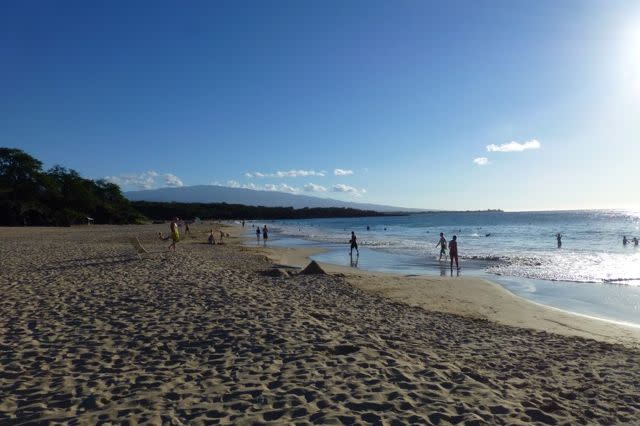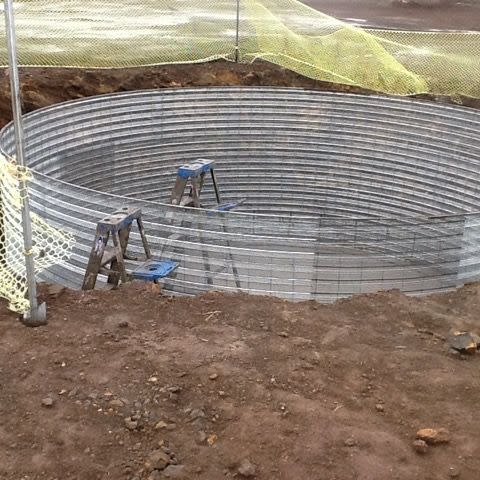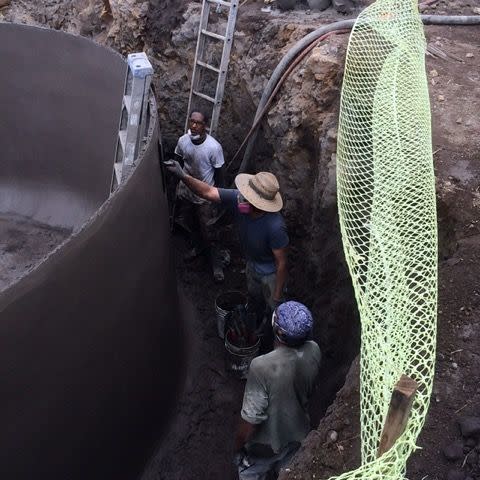Building the Dream: Dry Side, Wet Side
There are two sides to everything, and that’s true for Hawaii too.
Look at the topographical map below, and it’s easy to see where the island is lush and where it’s dry.

Up close, those two sides can look like this:

or this:

Hawaii’s lush side is its windward north and east. Trade winds sweep across the island, toward the equator, carrying moist ocean air. Then they hit the towering volcanoes (Mauna Kea is 13,796 feet—the highest mountain in the state—and Mauna Loa isn’t much lower at 13,678), which cools the air, creating clouds that eventually turn to rain. And because the tropical island has such good volcanic soil, plants there just grow and grow and grow.
The leeward side is the opposite. Trade winds reach Hawaii’s western and southern coasts after losing their moisture, inevitably making them drier. That’s where you find calmer water, fewer clouds and stunning beaches, along with the island’s resorts. There’s lava in many areas around the island—including the most recent flow, which started spilling toward Pahoa in June 2014—but where craggy sheets of it are baked by the sun in the west, the outside temperatures can make you feel like you’re baking, too. All the more reason to seek out the ocean and the sand, including at our standby favorite, Hapuna Beach.

I’ve oversimplified the meteorology—there are notable exceptions to the trade-wind rule about where it’s dry and wet, including around the low-mountain towns of Captain Cook and Holualoa in the west, where Kona coffee is grown and where the morning sun almost always turns to afternoon clouds or rain—but that’s essentially the difference between north, east, south and west.
When Paula and I were deciding where to set our stakes, even before we decided to purchase land and build, it took a while for us to settle on North Kohala. It’s impossible not to be wowed by the windward side’s abundant green—and by its flowers and orchids, which aren’t green at all—but both of us are water people and we didn’t choose Hawaii to be so far from its best swimming beaches. (I know it sounds crazy, but I know Hawaiians who say they don’t really like the water.) Still Paula’s also a horticulturalist, and the only way plants can truly grow on the sunbaked leeward side is with substantial—and expensive—irrigation. And so North Kohala seemed a marriage of the two. Officially, we’re on the wet side, which keeps our pastures green and will make our gardens flourish once Paula gets to work, but we’re also close enough to the dry side to make a trip to idyllic beaches an effortless drive.
One other thing about the wet side of North Kohala is that with 66 inches of rain per year it’s allowing us to build totally off the grid. We’ll collect water from the rain, with a system of gutters attached to the eaves, which we’ll funnel into a 13,300-gallon gunite tank, with a food-grade interior membrane and cementitious waterproofing on the exterior, which will provide the water for our house, including for a deep-soaking tub. (At least, that's our plan.)
What does a 13,300-gallon gunite tank look like when it’s above the ground? A little like a miniature nuclear reactor, perhaps. So we’ve buried it, with a lid we can even plant grass and flowers on. Here it is being built:




Dry side? Wet side? Maybe it’s even possible in Hawaii to have both.


